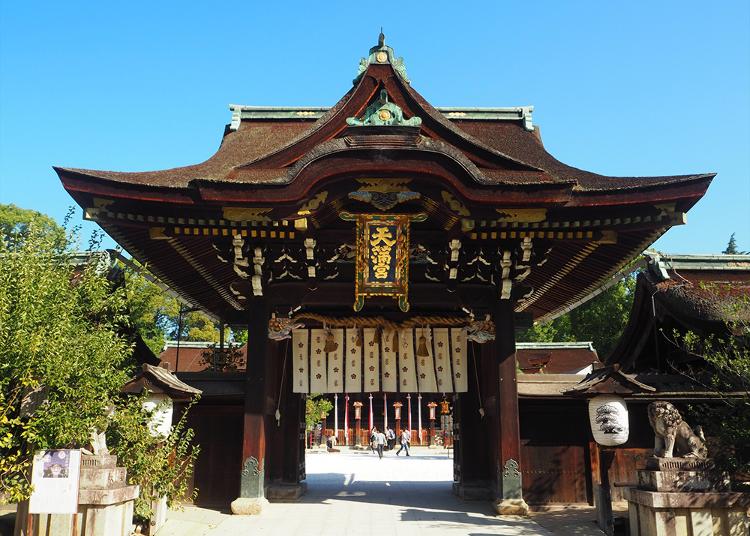
Discover the top eight shrines in Kyoto, as recommended by LIVE JAPAN, a premier travel website for visitors to Japan. Our list is based on the most popular pages viewed by international travelers, offering you the best insights and travel tips.
1. Fushimi Inari-taisha Shrine
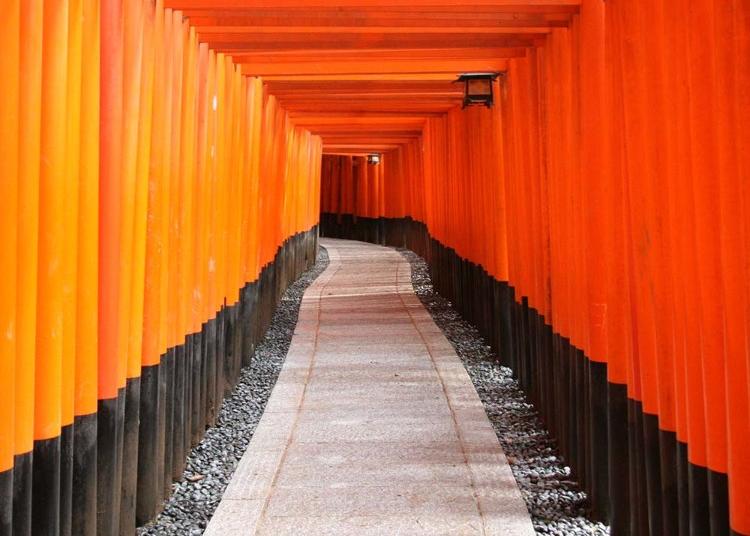
Fushimi Inari-taisha Shrine is famed for its classic red torii gates. Located on Mt. Inari, the southernmost peak of the Higashiyama Sanju-Roppo (36-mountain range), this shrine is a must-visit.
Founded in 711, it serves as the head shrine for the approximately 30,000 to 40,000 Inari shrines across Japan. Affectionately known as "Oinari-san," the shrine's deity is revered as the god of good harvests, business success, industry growth, family safety, traffic safety, and artistic success. Throughout the grounds, you'll encounter statues of foxes, believed to be Oinari-san's messengers.
The shrine’s most captivating feature is the Senbon Torii, a stunning pathway of 1,000 vibrant vermillion torii gates that attract visitors from around the world. The vast grounds, covering about 870,000 square meters, encompass the entire mass of Mt. Inari and are dotted with many small shrines called otsuka. Beyond the 1,000 torii gates and Okusha Hohaisho, you'll find a 4-km forest trail known as "Oyama Meguri," lined with numerous otsuka.
Senbon Torii: A Photogenic Marvel
When you think of Fushimi Inari-taisha Shrine, the iconic 1,000 torii gates immediately come to mind. These beautiful vermillion gates stretch from the main shrine to Okusha Hohaisho. This tradition, dating back to the Edo period, involves dedicating a torii gate in gratitude for a fulfilled wish. In fact, there are about 10,000 torii gates scattered across the mountain.
White Foxes: Messengers of Inari
White foxes, believed to be the messengers of the deity Inari, can be seen throughout the shrine grounds. Statues of these seated foxes are a common sight. In front of the Ro-mon gate, you'll find a pair of fox statues representing the "A-un" relationship, symbolizing inspiration and expiration.
The Omokaru-ishi Stone: A Wishful Tradition
Behind the Senbon Torii lies Okusha Hohaisho, known as "Oku-no-in" (inner sanctuary). Here, you'll find a pair of stone lanterns. To test if your wish will come true, make a wish and lift the kuurin (the top of the lantern). If it feels lighter than expected, your wish is likely to come true; if heavier, it may not. This sacred practice, centered around the "Omokaru-ishi Stone," attracts many hopeful visitors.
Oyama Meguri: Exploring the Sacred Mountain
Embark on the Oyama Meguri walk to delve into the history and energy of Mt. Inari. This 4-km trail winds through the vast grounds of Fushimi Inari-taisha Shrine, passing unique otsuka such as Kumataka-sha, Mitsurugi-sha, Ganriki-sha, Ichi-no-mine, Ni-no-mine, and San-no-mine.
-

-
Address
68, Fukakusayabunouchicho, Fushimi-ku, Kyoto-shi, Kyoto, 612-0882
View Map -
Nearest Station
Inari Station (JR Nara Line)
- Phone Number 075-641-7331
-
Address
68, Fukakusayabunouchicho, Fushimi-ku, Kyoto-shi, Kyoto, 612-0882
2. Yasaka-jinja Shrine
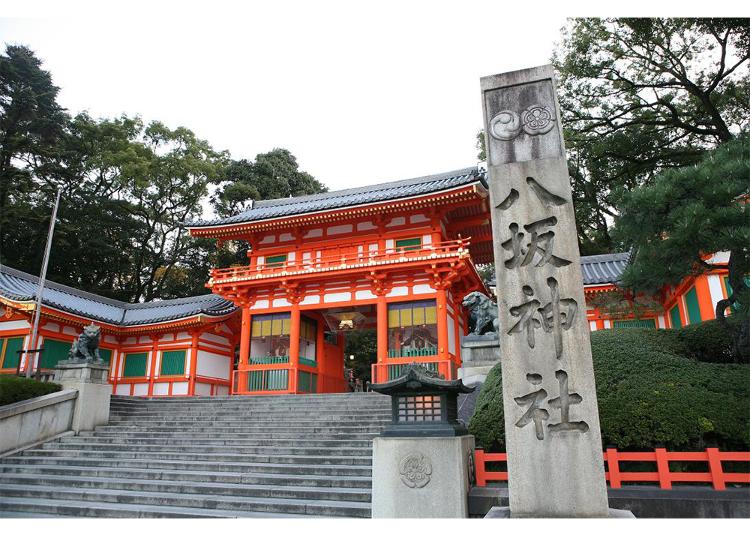
Located at the eastern end of Shijo-dori, often considered Kyoto's main street, Yasaka-jinja Shrine is a prominent and historic site. The Nishi-Ro-mon gate, facing the bustling Gion intersection, is a popular spot for tourists. The shrine honors Susanoo-no-Mikoto and serves as the head shrine for all associated shrines in Japan. Originally called Gion-sha, it was renamed Yasaka-jinja Shrine in 1868 during the separation of shrines and temples. Despite the name change, many locals still refer to it as "Gion-san." The shrine is renowned for hosting the annual Gion Festival, one of Japan's three greatest festivals, and various Shinto rituals throughout July.
Gion Festival: A Celebration of Tradition and Music
The Gion Festival, famous for its lively and rhythmic music known as konchikichin, has a rich history spanning 1,150 years. Originating as a ritual called goryoe to appease vengeful spirits during an epidemic in 869, it has evolved into one of Japan's most significant festivals. The festivities kick off with Kippu-iri on July 1, followed by a series of events including Omukae Chochin (welcome lanterns) on the 10th, Yoiyama (small festival) from the 14th to the 16th, and the grand Yamahoko Junko (procession of floats) on the 17th and 24th. The enchanting sound of konchikichin music fills the Gion district during these celebrations. Some events are organized by Yasaka-jinja Shrine, while others are managed by the local wards that maintain the Yama and Hoko floats.
Okera-mairi: A New Year Tradition for Health and Happiness
The Okera-mairi ritual, held from December 31 to January 1, is a cherished New Year tradition at Yasaka-jinja Shrine. Holy fire is lit inside Okera-toro lanterns on New Year's Eve and kept burning throughout the night alongside Okera-gi (wooden inscriptions). Visitors use twisted bamboo ropes to carry the sacred fire home, a practice believed to bring health and happiness for the coming year. It's a common sight to see people twirling their ropes to keep the flames alive as they walk through Kyoto during the New Year.
Utsukushi Gozen-sha Shrine: A Sanctuary for Beauty and Purity
Within Yasaka-jinja Shrine's grounds, you'll find many auxiliary shrines (sessha) and smaller shrines (massha). One of the most popular is Utsukushi Gozen-sha Shrine, dedicated to the goddesses Ichikishimahime-no-Mikoto, Takirihime-no-Mikoto, and Takitsuhime-no-Mikoto. Revered as a shrine for wealth, performance art, and beauty, it attracts many visitors, including geiko and maiko from Gion. The shrine's beauty water is said to purify both the body and mind. Applying droplets of this sacred water is believed to cleanse your skin and heart, making it a beloved spot for those seeking beauty and inner peace.
-

-
Address
625, Gionmachikitagawa, Higashiyama-ku, Kyoto-shi, Kyoto, 605-0073
View Map -
Nearest Station
Gionshijo Station (Keihan Line)
5 minutes on foot
- Phone Number 075-561-6155
-
Address
625, Gionmachikitagawa, Higashiyama-ku, Kyoto-shi, Kyoto, 605-0073
3. Jishu-jinja Shrine
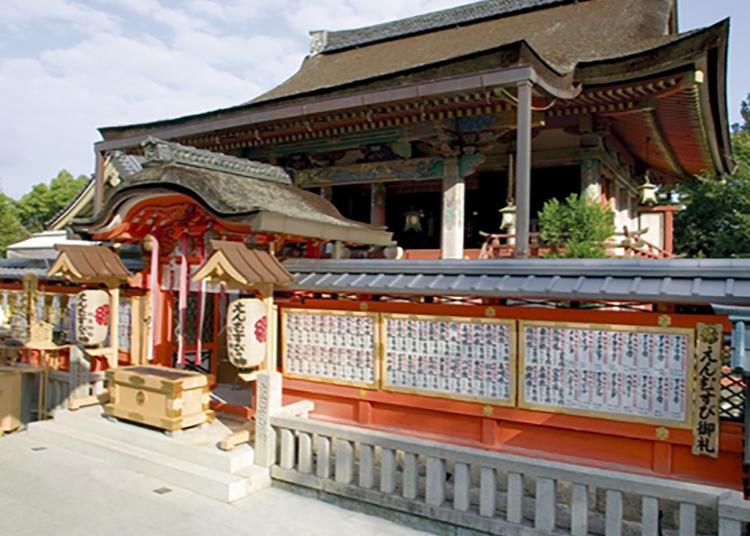
Located near the stage of Kiyomizu-dera Temple, Jishu-jinja Shrine is a historic site believed to predate the founding of Japan itself. Nestled in the revered area of Mt. Horai, a sacred mountain symbolizing perpetual youth and longevity, this shrine has long been a guardian of Kiyomizu-dera Temple until the Edo period. It has drawn countless worshippers of Ubusunagami (a guardian deity of one's birthplace) to the Kiyomizu and Yasaka area for centuries. The main deity, Okuninushi-no-Mikoto, attracts numerous visitors seeking blessings for marriage. The current shrine structures, built by the third Tokugawa Shogun, Iemitsu, in 1633, are adorned with beautiful patterns in various colors. The entire grounds, along with the inner and outer shrine, are registered UNESCO World Heritage sites as Historic Monuments of Ancient Kyoto.
Koiuranai-no-ishi: Love Fortune Stones from the Edo Period
Just off the path in front of the inner shrine lies a pair of guardian stones known as “Koiuranai-no-ishi” (love fortune stones). Tradition holds that if visitors can navigate between these stones, about ten meters apart, with their eyes closed, the shrine's deity will grant their wish for love. Experts have identified that these stones, which have attracted visitors since the Edo period, are relics from the Jomon period.
Sacred Spots for Good Match and Good Luck
The grounds of Jishu-jinja Shrine are filled with sacred places believed to bring good matches and good luck. These include Haraedo-sha, where you can purify your mind and body with haraigushi (wands used in Shinto rituals); a shrine to Nadedaikoku, where different wishes are granted depending on the part of Daikoku’s statue you stroke; a shrine with a gong for praying by sound, where ringing the gong three times brings a good match; a Buddhist statue called “Mizukake Jizo” that is believed to bring good luck to those who throw water on it while making a wish; and a shrine to Okage Myojin, a deity said to grant any kind of wish one time only. If you're seeking a good match, these sacred spots are worth a visit.
Enmusubi Kigan Sakura Festival: A Celebration of Cherry Blossoms and Divine Blessings
The cherry trees in the shrine's grounds, known as “Jishu-zakura,” have long been a public favorite. This rare species features branches with both single- and double-petal flowers. According to tradition, when Emperor Saga visited the shrine in 811, he was so enchanted by the beauty of the Jishu-zakura that he had his carriage turned around three times to view the flowers. Thus, the Jishu-zakura are also known as “Mikuruma-gaeshi-no-Sakura” (cherry trees that coaxed the return of the imperial carriage). The Enmusubi Kigan Sakura Festival, held on the second Sunday of April each year, celebrates these beautiful cherry trees, honors the divine power of the deities, and prays for everyone to be blessed with a good relationship.
-

-
Address
1-317, Kiyomizu, Higashiyama-ku, Kyoto-shi, Kyoto, 605-0862
View Map -
Nearest Station
Gionshijo Station (Keihan Line)
25 minutes on foot
- Phone Number 075-541-2097
-
Address
1-317, Kiyomizu, Higashiyama-ku, Kyoto-shi, Kyoto, 605-0862
4. Kifune-jinja Shrine
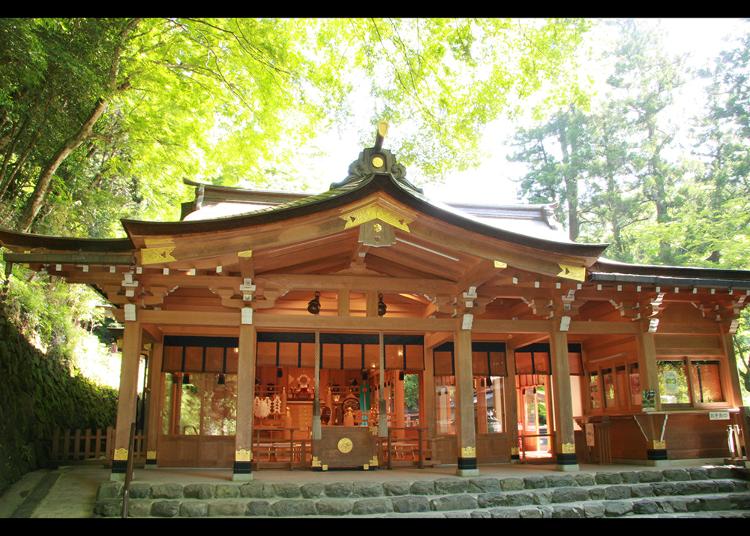
Straddling the border between Mt. Kibune and Mt. Kurama at the northern tip of the Rakuhoku district, Kifune-jinja Shrine has been a place of worship since ancient times, though the exact date of its founding is unknown. Legend has it that the upper course of the Kibune River was revered as the shrine of kifune (yellow boat) around the time of the 18th Emperor Hanzei, about 1,600 years ago. The shrine is classified as a Myojin Taisha, home to a deity known as Myojin, believed to have performed remarkable miracles throughout history. The main sanctuary is divided into the Motomiya (main shrine), Yui no yashiro or Nakamiya (middle shrine), and Okumiya (rear shrine), with the Motomiya and Okumiya located 700 meters apart. A traditional way of worship called "Sanshamairi" involves visiting the Motomiya, Nakamiya, and Okumiya in sequence to fulfill your wishes. The shrine also honors the spirit of water, Takaokami no kami, revered by those in water-related professions who pray for rain, and a god of marriage, attracting many worshippers seeking love and harmony.
Collect Sacred Water from the Stone Wall
Springwater from Mt. Kibune flows from the stone wall of the Motomiya. This mildly alkaline natural water is of excellent quality and drinkable. Visitors can freely collect the water by bringing their own containers. This sacred water cools you down in summer and offers a mystical warmth in winter. The shrine also sells a unique 600 ml container for collecting the water.
Mystical Hydromancy: A Popular Attraction for Visitors
At the Motomiya, you can experience hydromancy, a popular activity among international visitors. Simply place an omikuji (paper slip with an invisible fortune) on the spring waters, and your fortune will appear. The omikuji includes a QR code that reveals your fortune in English, simplified Chinese, traditional Chinese, or Korean, depending on your device's settings. With free Wi-Fi available on the grounds, it's easy to enjoy this mystical experience.
Okumiya: The Birthplace of Kifune-jinja Shrine
Okumiya, the original site of Kifune-jinja Shrine, was once treated as the Motomiya. According to legend, Tamayorihime-no-Mikoto traveled on a kifune (yellow boat) up the rivers and discovered a sacred spring (fukii) at the current Okumiya site. She enshrined the deity of water here and named it "Kifune no Miya" (the shrine of Kifune). The sacred spring is believed to be the current Ryuketsu (dragon cave) located beneath the main building of Okumiya. Beside the main building is the Funagata-ishi (boat-shaped stone), believed to have hidden the kifune. This area exudes a divine atmosphere.
Yui no yashiro (Nakamiya): A Shrine for Marriage Blessings
Located between the Motomiya and Okumiya, Yui no yashiro is renowned as a deity of marriage. During the Heian period, poet Izumi Shikibu visited the shrine to pray for reconciliation with her husband, and her wish was granted. Visitors can find a monument inscribed with a poem by Izumi Shikibu in the shrine grounds.
-

-
Address
180, Kuramakibunecho, Sakyo-ku, Kyoto-shi, Kyoto, 601-1112
View Map -
Nearest Station
Kibuneguchi Station (Eizan Dentetsu-kurama Line)
30 minutes on foot
- Phone Number 075-741-2016
-
Address
180, Kuramakibunecho, Sakyo-ku, Kyoto-shi, Kyoto, 601-1112
5. Kitano Tenman-gu Shrine
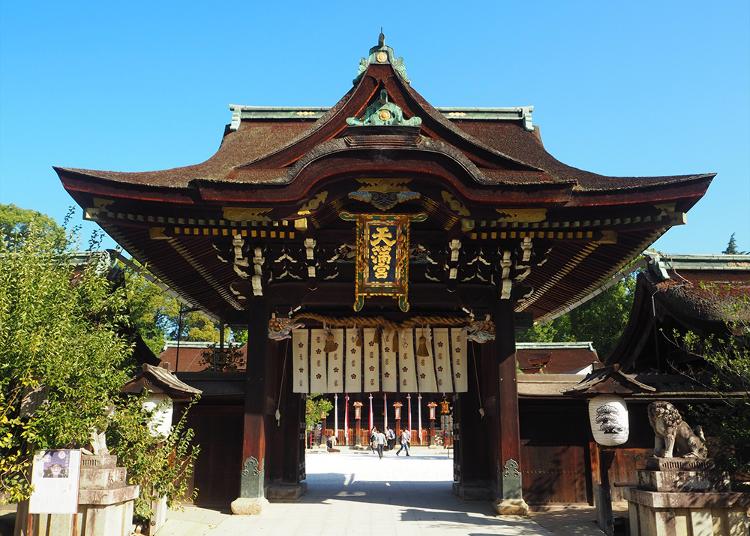
Kitano Tenman-gu Shrine is the head shrine of all the Tenman-gu shrines in Japan, dedicated to Sugawara no Michizane. Affectionately known as "Kitano no Tenjin-san" (Mr. Tenjin of Kitano), its deity is revered as the god of learning. The shrine has a close connection with the Toyotomi family, and its luxuriant main hall, built by Hideyori Toyotomi in 1607, showcases Momoyama architecture. The honden (main hall) and haiden (hall of worship) are connected by a low building called an "Ishinoma." This type of structure, known as "Yatsumune-zukuri," has been designated a National Treasure due to its historical significance in shrine architecture. On the 25th of every month, the birth and death anniversary of Sugawara no Michizane, the Tenjin Market enlivens the grounds with numerous stalls and bustling crowds. The shrine is also renowned for its plum blossoms and vibrant maple leaves.
A Plethora of Cultural Assets: National Treasures Await in the Treasure Hall
Built in 1927, the treasure hall houses a vast collection of artworks and offerings, including ancient documents, swords, gold and silver lacquer works, folding screens, and tea utensils. Highlights include the Kitano Tenjin Engi scroll painting (Jokyu-bon: Painted in the Jokyu period, early thirteenth century) (National Treasure), a painting of Kitano Oochano-yu (The Great Kitano Tea Gathering), the legendary tachi (long sword) Onikirimaru (also known as Higekiri) (Important Cultural Property), and the tachi Kunihiro (Important Cultural Property) donated by Hideyori Toyotomi. The treasure hall features special-themed exhibitions each season alongside its permanent collection.
View Varieties of Plum Blossoms at Kyoto's Premier Viewing Spot
The shrine's grounds are home to 1,500 plum trees representing about 50 species, linked to Sugawara no Michizane. From early February to late March, the plum garden opens to the public, making it a must-visit if you're in Kyoto during this period. While there, enjoy green tea and Japanese confectionery at a tea house. On February 25, the Baikasai (plum blossom festival) is held in a solemn atmosphere to mark the death anniversary of Sugawara no Michizane. During the festival, an enormous outdoor tea ceremony takes place within the shrine grounds, where you can enjoy plum blossoms along with tea and confectionery served by geisha and maiko from Kamishichiken, the oldest geisha district in northwest Kyoto.
Beautiful Autumn Maple Trees at the Momiji-en on Hideyoshi's Odoi
The western part of the shrine's grounds features remnants of Odoi, earthen fortification mounds built by Hideyoshi Toyotomi to protect Kyoto's urban area from floods. These mounds are designated as national historical sites. The area, rich in natural beauty including a nearly 400-year-old tree, has become the Momiji-en (autumn maple garden) with around 350 maple trees. The garden is open to the public from late October to early December and is illuminated at night from early November.
-

-
Address
Bakurocho, Kamigyo-ku, Kyoto-shi, Kyoto, 602-8386
View Map -
Nearest Station
Kitanohakubaicho Station (Keifuku Dentetsu-kitano Line)
5 minutes on foot
- Phone Number 075-461-0005
-
Address
Bakurocho, Kamigyo-ku, Kyoto-shi, Kyoto, 602-8386
6. Heian-jingu Shrine
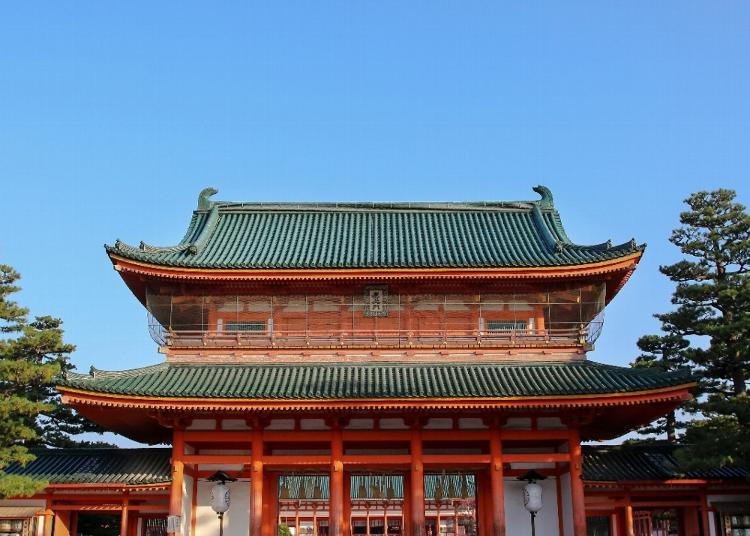
Heian-jingu Shrine was built in 1895 thanks to the yearning of Kyoto's citizens to restore a city devastated during the upheaval at the end of the Edo period. The shrine enshrines the 50th Emperor Tenmu, who relocated the capital to Heian-kyo (ancient Kyoto). In 1940, commemorating 2,600 years of imperial succession, it also enshrined the 121st Emperor Komei, the last emperor to occupy the throne in Kyoto. The main building of Heian-jingu Shrine is a 5/8 scale reproduction of Chodo-in, a state chamber of Daidairi (the Imperial Palace and government offices) in Heian-kyo. In addition to the shrine, buildings such as Daigokuden, Outen-mon gate, Soryuro, Byakkoro, Tozai Horo, Ryubidan, and the nationally designated scenic Shin-en Garden were constructed. Heian-jingu Shrine and Shin-en Garden have received a star in the "Michelin Green Guide Japon."
Large Vermillion Torii Gate Towering Over Jingu-michi
The grand torii gate in Jingu-michi, 300 meters south of the Outen-mon gate (the front gate of Heian-jingu Shrine), was built in 1929 to commemorate the enthronement of Emperor Showa. As a registered national tangible cultural property, it stands 24.4 meters high and 18 meters wide, with poles 3.63 meters in diameter, making it one of the largest torii gates in Japan.
Shin-en Garden: A Scenic Oasis with Seasonal Beauty
Shin-en Garden, constructed simultaneously with Heian-jingu Shrine, is a Japanese garden designated as a national place of scenic beauty. Comprising the east, central, west, and south gardens that surround the main shrine building, the garden adopts the Chisen Kaiyu style (a Japanese garden with a path around a central pond and fountain) and draws water from the Lake Biwa Canal. Covering approximately 33,000 square meters, the garden showcases beauty in all four seasons: weeping cherry trees in spring, alluring irises in summer, fiery leaves in autumn, and snow scenery in winter.
Period Festival: A Spectacular Live Picture Scroll Reflecting Eight Eras
The Period Festival, one of the three major festivals in Kyoto, is an annual event at Heian-jingu Shrine held on October 22. It features a parade divided into twenty sections representing eight eras: the Meiji Restoration, Edo, Azuchi-Momoyama, Muromachi, Yoshino, Kamakura, Fujiwara, and Enryaku. Approximately 2,000 people dressed in costumes from these eras form a parade that stretches about two kilometers.
-

-
Address
97, Okazakinishitennoucho, Sakyo-ku, Kyoto-shi, Kyoto, 606-8341
View Map -
Nearest Station
Higashiyama Station (Tozai Line)
10 minutes on foot
- Phone Number 075-761-0221
-
Address
97, Okazakinishitennoucho, Sakyo-ku, Kyoto-shi, Kyoto, 606-8341
7. Toyokuni Shrine
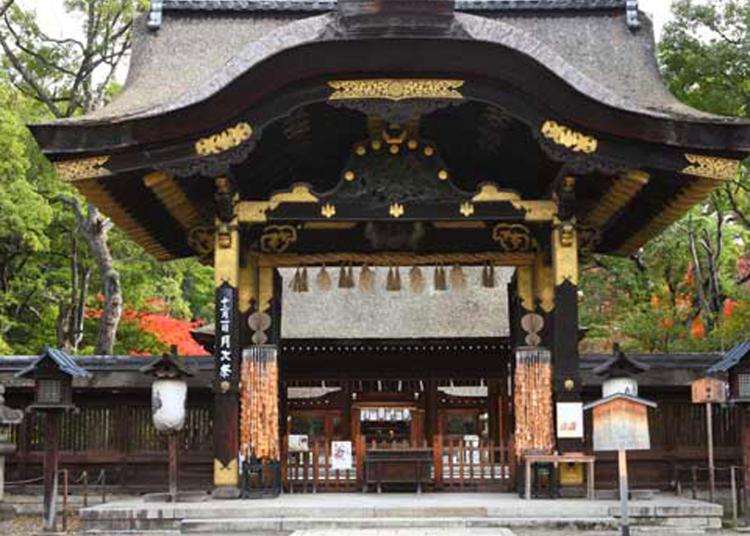
At Toyokuni Shrine, the main deity of worship is Hideyoshi Toyotomi. Originally located at Amidagamine Castle, the shrine was abandoned after Hideyoshi's downfall but was reconstructed at its current location in 1880. The shrine houses various artifacts closely related to Hideyoshi, preserving his legacy and significance in Japanese history.
-

-
Address
530, Chayamachi, Yamatooji-dori shomen, Higashiyama-ku, Kyoto-shi, Kyoto, 605-0933
View Map -
Nearest Station
Shichijo Station (Keihan Line)
6 minutes on foot
- Phone Number 075-561-3802
-
Address
530, Chayamachi, Yamatooji-dori shomen, Higashiyama-ku, Kyoto-shi, Kyoto, 605-0933
8. Mikami Shrine
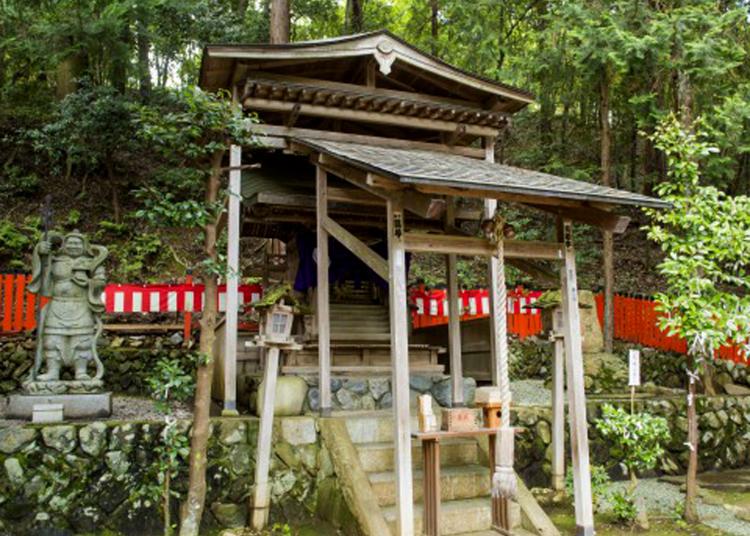
Mikami Shrine is the only shrine in Japan dedicated to protecting hair. It attracts many visitors from beauty salons and individuals hoping to pass their national beautician examination. The shrine's ema (votive tablets) and charms are uniquely designed in the shape of a comb, symbolizing its special focus.
-

-
Address
Sagaogurayamatabuchiyamacho, Ukyo-ku, Kyoto-shi, Kyoto 10-2, 616-8394
View Map -
Nearest Station
Torokko Arashiyama Station (Sagano Scenic Railway)
1 minute on foot
- Phone Number 075-882-9771
-
Address
Sagaogurayamatabuchiyamacho, Ukyo-ku, Kyoto-shi, Kyoto 10-2, 616-8394
- Area
- Category
*Prices and options mentioned are subject to change.
*Unless stated otherwise, all prices include tax.
Popular Tours & Activitiess
Recommended places for you
-

ISHIDAYA Hanare
Yakiniku
Kobe, Sannomiya, Kitano
-

Kanzenkoshitsuyakinikutabehodai Gyugyu Paradise Sannomiya
Yakiniku
Kobe, Sannomiya, Kitano
-

Kambei Sannomiyahonten
Yakiniku
Kobe, Sannomiya, Kitano
-

Jukuseiniku-to Namamottsuarera Nikubaru Italian Nikutaria Sannomiya
Izakaya
Kobe, Sannomiya, Kitano
-

To-ji Temple
Temples
Kyoto Station, To-ji Temple
-
Goods

Yoshida Gennojo-Roho Kyoto Buddhist Altars
Gift Shops
Nijo Castle, Kyoto Imperial Palace
-
Ad

Visiting the Osaka–Kansai Expo? Enjoy These 5 Great Itineraries from Osaka-umeda for Nature and City Lovers
-

History and Sustainable Brewing: World-Renowned Fukuju Sake at Kobe Shushinkan
by: WESTPLAN
-

Best Things to Do and See Around Kyoto & Osaka in September: Events and Festivals in Kansai
-
Ad

Café Bahnhof in Osaka: The home-roasted coffee that captivated G20 leaders!
-
Ad

Discover Timeless Beauty: Kimono-en, a Web Magazine Exploring the Spirit of Kimono
-

November Events in Kansai: Fun Festivals, Food, and Things to Do in Kyoto & Osaka
Inspiration for Accommodations
-

Spacious Family Hotel in Namba: 20 Comfortable Stays for Family Fun
-

Charming Hotels to Enjoy the Spectacular Views of Arashiyama's Autumn Leaves from Your Room
-

Experience Stunning Views of Osaka Castle from Private Spaces: Top Hotels Near Osaka Castle
-

Recommended by Visitors! Arashiyama's Best-Rated Hotels
-

Family-Friendly Universal Studios Japan Hotel with Excellent Access
-

Enjoy a Comfortable Stay in Osaka! 10 Hotels with Convenient Airport Shuttle Services
-

Top 10 Recommended Hotels Near Namba Station with Great Access
-

Enjoy Night Views from Your Room! Recommended Hotels in Namba Area
-

10 Best Hotels Near Kyoto Station: Budget-friendly, Perfect for Kyoto Sightseeing
-

Cool Down in the Hot Summer! 10 Refreshing Places to Visit in Kyoto in Summer
by: WESTPLAN
-

38 Best Things to Do in Kyoto: See, Eat, and Shop Your Way Through Japan's Cultural Capital
-

Top 5 Shinto Shrines and Power spots in Kansai for Love and Marriage
-

Secrets to Shopping in Japan: Guide to Annual Sales in Japan & Where to Shop
by: Miyu Shimada
-

Kasuga Taisha: A Kyoto Day Trip to See the Unforgettable Sight of 3,000 Lanterns
- #best gourmet Osaka
- #things to do Osaka
- #what to do in kyoto
- #what to bring to japan
- #best gourmet Kyoto
- #new years in Osaka
- #what to buy in nanba
- #Visiting Osaka
- #onsen tattoo friendly arima
- #daiso
- #Visiting Kyoto
- #best japanese soft drinks
- #japanese fashion culture
- #japanese convenience store snacks
- #japanese nail trends















